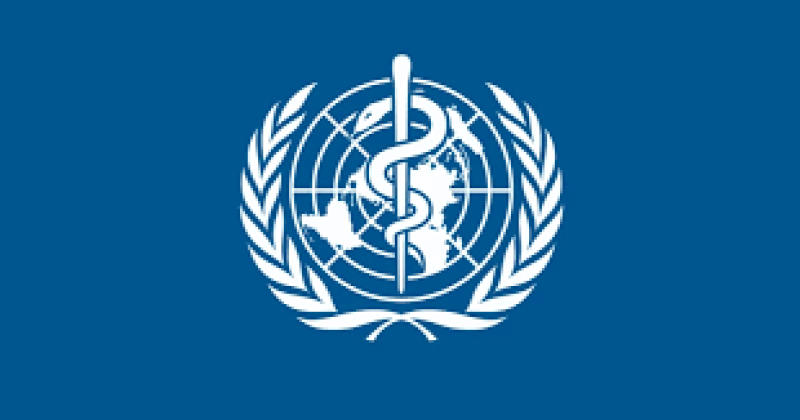- US Issues Travel Alert for Bangladesh Ahead of Election |
- Air ambulance carrying bullet-hit Hadi flies for Singapore |
- Can Dhaka’s arms recovery drive ensure peaceful polls? |
- ‘Unhealthy’ air quality recorded in Dhaka Monday morning |
- BD peacekeepers' deaths: UN chief calls Dr. Yunus, offers condolence |
Road Crashes Taking Young Lives in Bangladesh: WHO

WHO Representative to Bangladesh Dr Ahmed Jamsheed Mohamed has said road traffic crashes in Bangladesh are claiming the lives of young people and it is an unacceptable reality, which needs to be addressed urgently.
He also said road crashes also impose a significant burden on the health system due to both social and economic costs, which include direct medical expenses and indirect costs like loss of productivity, emotional and psychological impact on individuals and communities.
“The World Health Organization (WHO) urges all the stakeholders to come together and intensify efforts to uphold the fundamental right to safe mobility,” said the WHO Representative in an op-ed shared by the WHO Country Office for Bangladesh on Sunday.
The op-ed titled “Every Step Counts: Ensuring Safety for Pedestrians and Cyclists” was written on the 8th UN Global Road Safety Week that ends on May 18.
In Bangladesh, an estimated 31,578 people died in 2021 as per the Fifth Global Status on Road Safety (GSRRS23) which is six times higher than the figure of 5,084, the police-reported fatality data.
This makes road traffic accidents the leading cause of death for children and young people aged 5-29 years.
Dr Ahmed said global evidence and best practices have clearly laid out actions- the government must play a stewardship role and lead the way forward.
“It is time to rethink how we design and use our streets, placing people’s safety at the center. Making roads safer for walking and cycling must be a priority to ensure that all road users, especially the most vulnerable, are protected,” he said, adding that it is only then they can achieve ‘Good Health and well-being for all.’
The WHO Representative said Bangladesh is a densely populated country, and the incidence of road traffic crashes is on the rise with increasing number of vehicles, poor road design, adherence to traffic rules, inadequate monitoring systems and limited resources for the management of survivors after the crashes.
The country has taken several measures to tackle road traffic crashes. The government enacted Road Transport Act 2018, replacing the Motor Vehicle Ordinance of 1983, National Road Transport Policy 2004, National Integrated Multimodal Transport Policy, 2013; Strategic Transport Plan (STP) Detailed Area Plan (DAP) 2022-2035, showing commitment to establish a reliable and sustainable road transportation system.
With the support of World Health Organization (WHO), the Directorate General of Health Service under the Ministry of Health and Family Welfare developed the Post-Crash Response Model to save lives since two-thirds of all road traffic fatalities occur on the way to the hospital and three-fourths do not receive any form of pre-hospital care.
“These initiatives have the potential to make our roads safer, reduce road traffic crashes and avert premature deaths and disability,” Dr Ahmed said.
By 2030 it is expected that around 70% of the global population will reside in urban areas. “Walking and cycling should be the most ordinary and, therefore, the safest modes of transport.”
He said encouragingly many countries are taking steps in the right direction, beginning to prioritise the right to safe mobility.
The WHO Representative said governments must continue to rethink urban mobility, enhancing road safety so that people can make healthier and more sustainable transport choices, especially walking and cycling, which benefit both individuals and the planet.
A shift towards safe walking and cycling will also contribute, both directly and indirectly, to the attainment of many of our collective Sustainable Development Goals – not only those related to health and well-being, but also those addressing climate action, sustainable cities, and reduced inequalities.
He said achieving the global road safety targets will require strong political-will to accelerate progress, including the design of safer streets and reducing the speed limits in areas where pedestrians and cyclists share the road with motor vehicles.
Besides, the WHO Representative said, the establishment of efficient governance systems, development of safe mobility infrastructure, strengthened law enforcement and trauma care systems are all essential to improving overall road safety.
He said road safety is a fundamental human right that must not be compromised as we reimagine the future of mobility.
The eighth UN Global Road Safety Week from May 12-18 May 2025 was observed focusing on making the world safe for everyone, particularly those who walk and cycle, “#MakeWalkingSafe” “#MakeCyclingSafe.”
Road traffic deaths continue to rise, said the WHO Representative. Globally, there were an estimated 1.19 million road traffic deaths in 2021, and 92% of those deaths occurred in low- and middle-income countries.
The UN General Assembly endorsed the Second Decade of Action for Road Safety 2021–2030 with the clear target to reduce road traffic deaths and injuries by at least 50% by 2030, reports UNB.
The Global Plan emphasizes the need for a shift towards people-centered road systems- the networks that are planned, designed, built, and operated to eliminate risks and save lives.
Creating cities and communities that are safer and more accessible for walking and cycling can have a huge positive impact on both public health and the environment, encouraging physical activity and improving air quality, said the WHO Representative.

